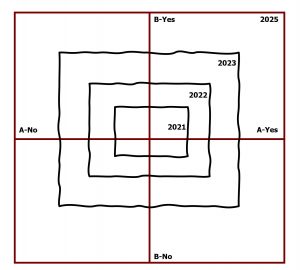“Managing 20 projects is different than managing three projects,” Andrew repeated. “And, it’s not just that there are more things to do.”
“How so?” I wanted to know.
“When, you have 20 simultaneous projects, you have to look for patterns. In each of the 20 projects, what is the same and what is different? There is no sense solving the same problem 20 times, when you can solve it once.”
“What else?”
“Every project has a start-up phase, mobilization. Every project has a conclusion, substantial completion, punch out and close-out. And, every project has interior milestones. So, there are patterns to find.”
“And?”
“And, if you recognize these patterns, you can build a system, a schematic, a flow chart that gives you a visual understanding how the components go together. In some cases, things become predictable, a natural sequence emerges. Some things can be done simultaneously, some things have to wait until something else is finished.”
“So, that’s the external stuff. What’s going on with you. What’s the inside story?”
Andrew stopped, looked down, then up. “Do I have what it takes. In the middle of the frenzy, will I get caught up in the weeds? Or will I have the fortitude to step back from the chaos and make mental sense of the noise?”
